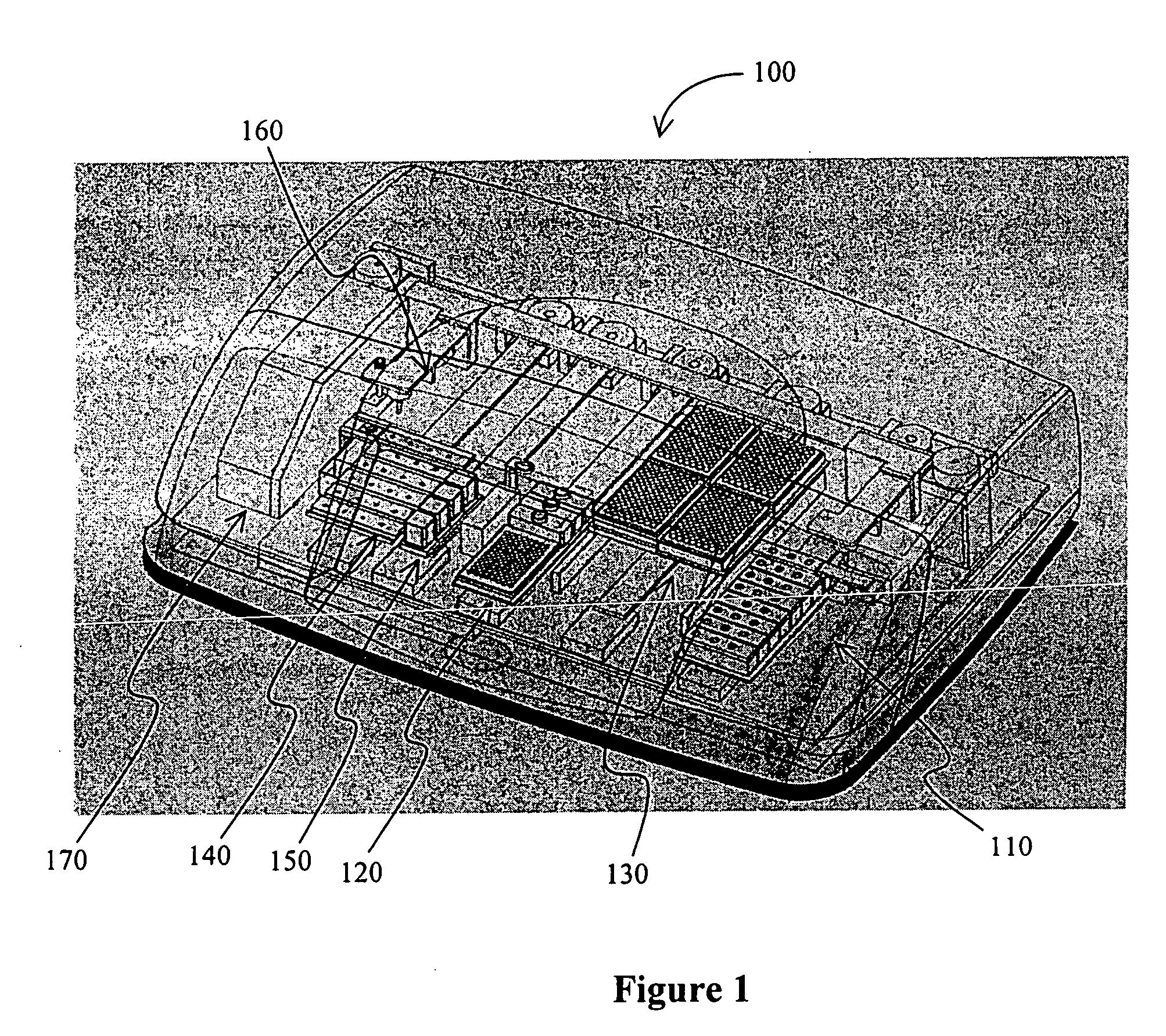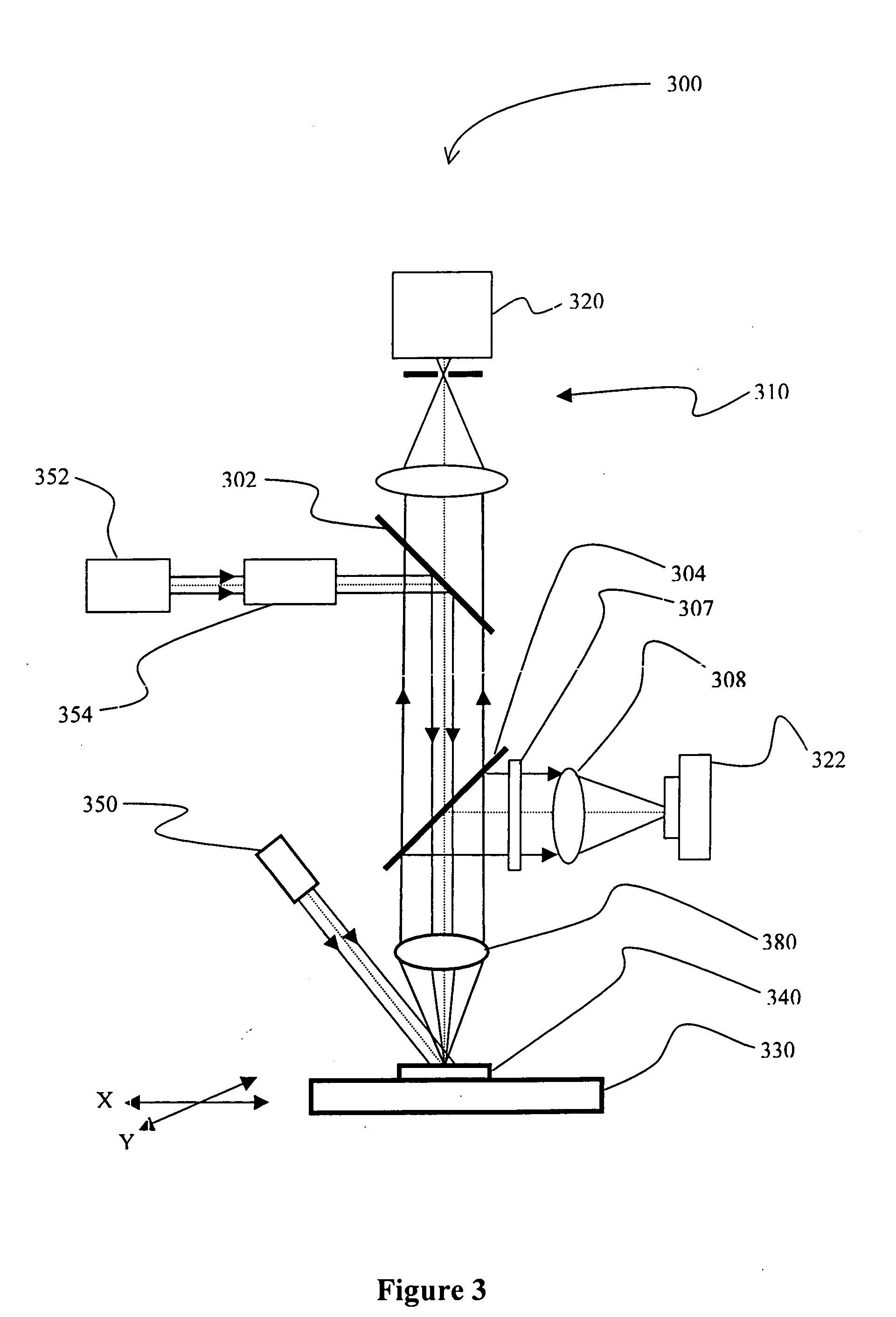Microarray detector and methods
a microarray and detector technology, applied in the field of optical detection, can solve the problems of inability to achieve electronic detection, and inability to achieve fast data acquisition
- Summary
- Abstract
- Description
- Claims
- Application Information
AI Technical Summary
Benefits of technology
Problems solved by technology
Method used
Image
Examples
Embodiment Construction
[0020] As used herein, the term “biochip” generally refers to a carrier that has a plurality of probes (to which an analyte may be coupled) in predetermined positions. In especially preferred biochips, at least one of the probes is coupled to the carrier via a crosslinker that is disposed in a matrix, and exemplary multi-substrate chips are described in commonly-owned and copending U.S. patent application Ser. No. 10 / 346,879, filed Jan. 17, 2003, and the PCT applications with the serial numbers PCT / US02 / 03917, filed Jan. 24, 2002, and PCT / US01 / 47991, filed Dec. 11, 2001, all of which are incorporated by reference herein.
[0021] The term “predetermined position” of an analyte refers to a particular position of the analyte on the chip that is addressable by at least two coordinates relative to a registration marker on the chip, and particularly excludes a substantially complete coating of the chip with the analyte an / or probe. Therefore, preferred pluralities of predetermined position...
PUM
| Property | Measurement | Unit |
|---|---|---|
| Diameter | aaaaa | aaaaa |
| Angle | aaaaa | aaaaa |
| Wavelength | aaaaa | aaaaa |
Abstract
Description
Claims
Application Information
 Login to View More
Login to View More - R&D
- Intellectual Property
- Life Sciences
- Materials
- Tech Scout
- Unparalleled Data Quality
- Higher Quality Content
- 60% Fewer Hallucinations
Browse by: Latest US Patents, China's latest patents, Technical Efficacy Thesaurus, Application Domain, Technology Topic, Popular Technical Reports.
© 2025 PatSnap. All rights reserved.Legal|Privacy policy|Modern Slavery Act Transparency Statement|Sitemap|About US| Contact US: help@patsnap.com



